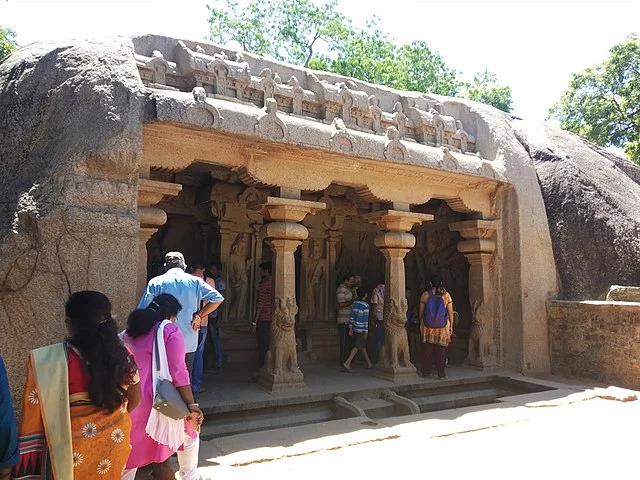The Varaha Cave Temple, located in Mamallapuram, Tamil Nadu, India, is a rock-cut Hindu temple from the 7th century AD. The temple is an important monument of the Pallava dynasty and showcases the distinctive Dravidian architectural style that the Pallavas developed and refined during their rule.
Get your dose of History via Email
Historical Background
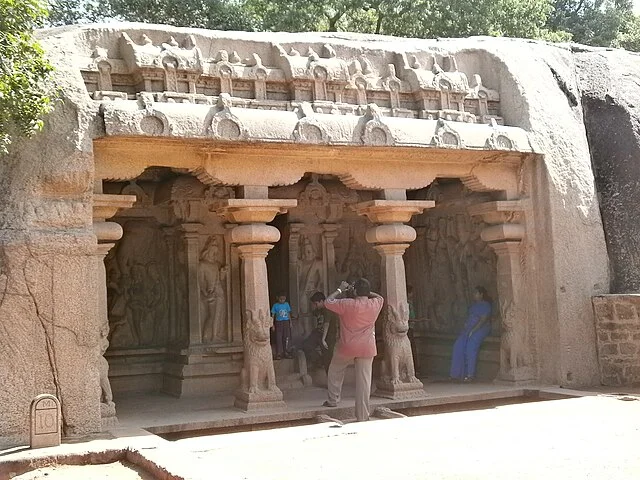
The Varaha Cave Temple was built during the reign of the Pallava king Narasimhavarman I, who ruled from AD 630 to AD 668. The Pallavas, known for their patronage of art and architecture, made significant contributions to early South Indian temple architecture. They pioneered the construction of rock-cut temples, which later influenced other dynasties in South India.
The temple, a UNESCO World Heritage site, is one of the many monuments in the Group of Monuments at Mamallapuram. The Pallavas chose Mamallapuram as a port city and adorned it with various rock-cut temples, sculptures, and reliefs. These monuments reflect the Pallavas’ religious devotion, artistic innovation, and skilled craftsmanship.
Architectural Features
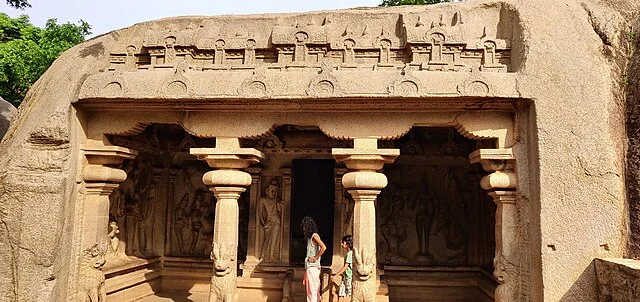
The Varaha Cave Temple is a classic example of Pallava rock-cut architecture. It has a simple yet striking facade, with a pillared hall that leads into the shrine. The temple consists of a mandapa, or main hall, and a sanctum sanctorum. The entrance is framed by two lion pillars, typical of Pallava temple architecture.
Inside, the temple features carved relief panels depicting scenes from Hindu mythology. One of the most notable is the Varaha panel, which shows the god Vishnu in his boar (Varaha) incarnation rescuing the earth goddess Bhudevi from the ocean. This relief is highly detailed and demonstrates the Pallava artisans’ mastery in sculptural art.
The architectural style of the Varaha Cave Temple is significant for its early use of Dravidian elements, which later became standard in South Indian temples. The temple’s design emphasizes harmony and proportion, using simple columns and capitals that reflect early Dravidian aesthetics.
Iconography and Religious Significance
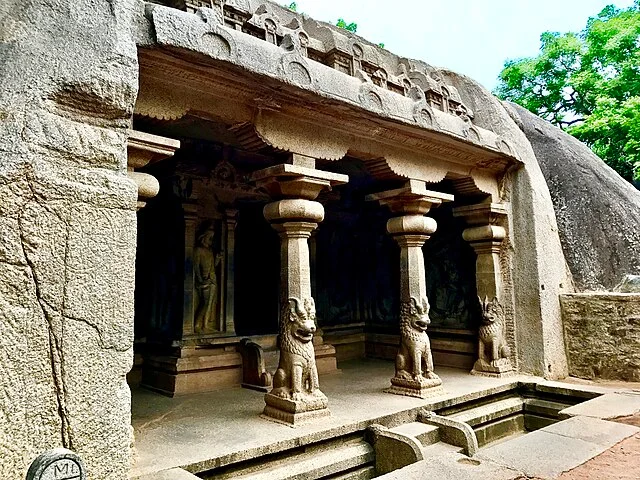
The relief sculptures in the Varaha Cave Temple depict important scenes from Hindu mythology. The Varaha panel, in particular, symbolizes the divine protection of the earth by Vishnu. In the legend, Vishnu takes the form of a boar to rescue Bhudevi, who represents the earth, from the demon Hiranyaksha.
Another prominent panel shows the goddess Durga standing on a lotus with her attendants, symbolizing her power and victory over evil. Another carving shows Trivikrama (Vishnu as Vamana) in a dynamic posture, a form associated with Vishnu’s conquest of the three worlds. These representations highlight key aspects of Hindu cosmology and reinforce the Pallavas’ dedication to Vishnu and other deities.
Artistic Style
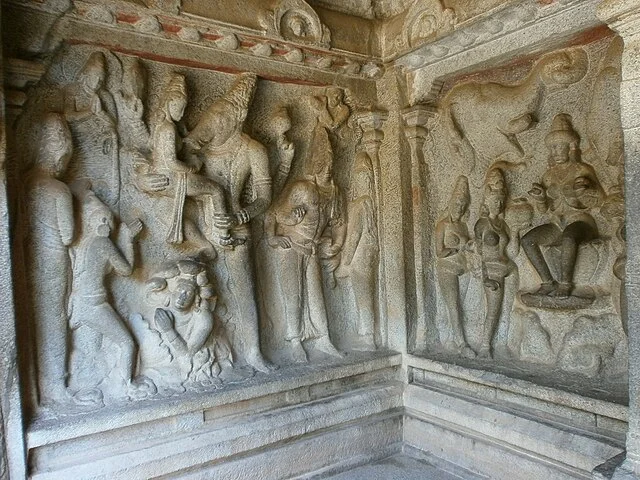
The carvings in the Varaha Cave Temple are known for their fine detail and expressiveness. The Pallava artisans achieved a high level of skill, evident in the fluid and naturalistic forms of the figures. The artisans’ ability to create depth and dimension within the rock surfaces is particularly noteworthy.
The reliefs also showcase an early form of South Indian artistic styles, characterized by detailed depictions of attire, jewelry, and posture. These features contribute to the temple’s historical importance as an artistic landmark that influenced later South Indian temple art.
Preservation and Legacy
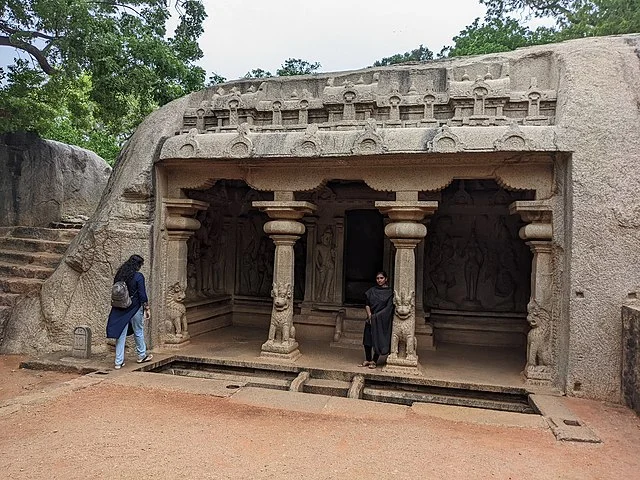
The Varaha Cave Temple has survived largely intact over the centuries, partly due to the durability of its rock-cut design. Today, it is maintained by the Archaeological Survey of India (ASI), which conducts regular conservation work to preserve the temple’s structure and carvings.
The Varaha Cave Temple, along with other monuments in Mamallapuram, continues to attract visitors and scholars alike. It stands as an enduring testament to the Pallavas’ contribution to Indian art and architecture. The temple’s unique combination of religious significance, architectural innovation, and artistic mastery has earned it a place among India’s most revered heritage sites.
Conclusion
The Varaha Cave Temple remains a remarkable example of Pallava architecture and an invaluable piece of India’s cultural heritage. It reflects the Pallava dynasty’s devotion, skill, and innovation, marking a significant phase in South Indian temple architecture. The temple continues to provide insight into the religious and artistic achievements of early medieval India, solidifying its importance in both academic study and cultural preservation.
Source:

